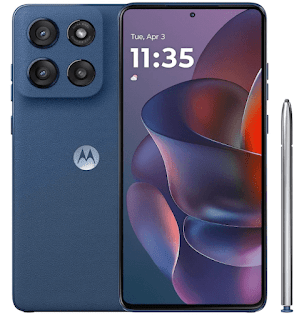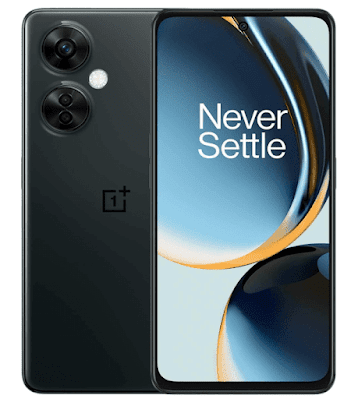Why This Guide Exists
Student phone shopping
is brutal. You're comparing specs at midnight, running calculations to figure
out if you can afford decent tech without surviving on instant noodles. Most
reviews assume you have unlimited funds, but this guide understands the reality
of student finances.
After extensive
research and hands-on testing, here's the truth: 2025 offers genuine
opportunities for budget-conscious students. Phone manufacturers have finally
recognized that not everyone can drop four figures on a device, leading to
surprisingly capable phones at accessible prices.
This guide focuses on
devices that balance essential features with realistic pricing - phones that
won't force you to choose between staying connected and paying for textbooks.
Top Smartphone Recommendations for Students
The Essential Three: Tested for Student Life
|
Device |
Current Market
Price |
Key Strength |
Standout Feature |
|
Google Pixel 8 |
$399-$450 |
Professional-grade
camera performance |
7 years of
guaranteed updates |
|
Samsung Galaxy
A35 5G |
$255-$330 |
Exceptional display
quality |
Expandable storage
up to 1TB |
|
Motorola Moto G
Stylus 2025 |
$240-$360 |
Built-in stylus
functionality |
Premium design with
water resistance |
Prices reflect
current market availability and may vary by retailer
What Students Actually Need in a Smartphone
The Non-Negotiable Features
Display Quality for
Academic Use: Your phone
screen serves as your portable study companion. You need crisp text rendering
for reading PDFs, clear visibility for photographing lecture slides, and enough
size to make extended reading sessions bearable.
Reliable Storage
Management: Between
educational apps, recorded lectures, research materials, and personal content,
storage fills quickly. Smart storage solutions and expandability options become
crucial for academic success.
All-Day Battery
Performance: Dead phones
during crucial moments - exams, interviews, emergency calls - create
unnecessary stress. Consistent battery life eliminates this anxiety from your
academic routine.
Document Capture
Capabilities: Modern
smartphones serve as portable scanners for notes, whiteboards, and textbook
pages. Quality camera performance in typical classroom lighting conditions
directly impacts your study efficiency.
Durability for
Daily Life: Student phones
endure backpack travel, occasional drops, weather exposure, and constant
handling. Build quality affects both longevity and total cost of ownership.
Detailed Device Analysis
Google Pixel 8 - The Academic Powerhouse ($399-$450)
Overall Assessment:
9/10 (Premium features at
mid-range pricing)
The Pixel 8 represents
exceptional long-term value despite the higher upfront cost. Google's
computational photography excels at document capture, while the extended
software support timeline makes this phone viable throughout your entire
academic career.
Academic
Advantages:
- Google Tensor G3 processor handles
multitasking efficiently
- Advanced camera system with macro focus
for detailed document capture
- 6.2-inch Actua display with 120Hz refresh
rate for smooth scrolling
- 24-hour battery life with extreme power
saving extending to 72 hours
- Seamless integration with Google Workspace
and educational tools
Practical
Considerations:
- Higher initial investment but superior
longevity
- No expandable storage requires careful
capacity planning
- Premium build quality justifies the cost
difference
Student-Specific
Benefits:
- Google Lens provides instant text
translation and recognition
- Call screening features reduce
interruptions during study sessions
- Regular security updates protect academic
and personal data
- Compatible with all major carriers for
flexible plan options
Samsung Galaxy A355G - The Balanced Choice ($255-$330)
Overall Assessment:
8.5/10 (Outstanding value
proposition)
The A35 strikes an
ideal balance between features and affordability. Samsung's Super AMOLED
display technology delivers premium visual quality, while practical features
like expandable storage address real student needs.
Key Specifications:
- 6.6-inch FHD+ Super AMOLED display with
Gorilla Glass Victus+
- 128GB internal storage expandable to 1TB
via microSD
- Triple camera system with 50MP main sensor
- 5000mAh battery with efficient power
management
- Android 14 with Samsung's productivity
features
Student Life
Integration:
- Large display enables split-screen
multitasking for notes and lectures
- Expandable storage eliminates capacity
anxiety
- Durable construction survives typical
student handling
- Samsung Notes app provides capable digital
note-taking
Minor Limitations:
- Software updates arrive slower than Google
devices
- Pre-installed apps require initial cleanup
- Camera performance, while good, doesn't
match Pixel quality
Motorola Moto GStylus 2025 - The Creative Student's Tool ($240-$360)
Overall Assessment:
8.2/10 (Unique
functionality at competitive pricing)
The built-in stylus
sets this device apart, making it particularly valuable for students in fields
requiring sketching, note-taking, or detailed annotations. The premium design
elements and robust feature set exceed expectations for the price point.
Distinctive
Features:
- Integrated stylus for natural handwriting
and drawing
- 6.7-inch pOLED Super HD display with
billion-color support
- 256GB storage with RAM boost technology
- Military-standard durability testing
(MIL-STD-810H)
- IP68 water and dust resistance
- Dolby Atmos audio enhancement
Academic
Applications:
- Handwritten note-taking feels natural and
responsive
- Sketch capabilities benefit art,
engineering, and science students
- Large storage capacity accommodates
extensive media libraries
- Rapid charging provides day-long power in
15 minutes
Considerations:
- Stylus functionality may not appeal to all
users
- Slightly larger form factor affects pocket
portability
- Camera system, while capable, focuses on
versatility over specialization
Samsung Galaxy A255G - The Budget Conscious Option ($200-$250)
Overall Assessment:
7.5/10 (Solid fundamentals
at entry-level pricing)
For students with
strict budget constraints, the A25 delivers essential smartphone functionality
without major compromises. While not exceptional in any single area, it
provides reliable performance across all basic needs.
Core Features:
- 6.5-inch FHD+ Super AMOLED display
- 128GB storage with expandable options
- Triple camera system with 50MP main sensor
- 5000mAh battery with 25W fast charging
- Octa-core processor with adequate
performance
Budget-Friendly
Benefits:
- AMOLED display quality typically found in
pricier phones
- Reliable battery life for full-day use
- Essential camera functionality for
document capture
- Samsung's ecosystem integration
OnePlus Nord N30 5G - The Performance Focus ($220-$280)
Overall Assessment:
7.8/10 (Speed prioritized
over refinement)
The N30 emphasizes raw
performance and display quality, making it suitable for students who prioritize
smooth operation and gaming capabilities over camera excellence or premium
build materials.
Performance
Highlights:
- Snapdragon 695 chipset with 8GB expandable
RAM
- 6.7-inch 120Hz display for fluid
interactions
- 108MP triple camera system with 3x
lossless zoom
- 5000mAh battery with 50W SUPERVOOC
charging
- Gaming-optimized features and thermal
management
Student Advantages:
- Rapid app switching and multitasking
- Excellent display quality for media
consumption
- Fast charging minimizes downtime
- Capable gaming performance for stress
relief
Limitations:
- Camera consistency varies with lighting
conditions
- Build quality feels less premium than
competitors
- Software update timeline shorter than
Samsung or Google
Battery Performance in Academic Settings
Real-World Usage Patterns
Intensive Study
Days (video lectures, note
apps, constant connectivity):
- Pixel 8: 15+ hours with moderate usage
remaining
- Galaxy A35: 14-15 hours of consistent
performance
- Moto G Stylus: 12-14 hours with stylus
usage
- Galaxy A25: 12-13 hours adequate
performance
- OnePlus N30: 13-14 hours with gaming mixed
in
Standard Academic
Days (messaging, research,
occasional streaming):
- All devices easily achieve full-day
battery life
- Moto G Stylus leads with potential two-day
usage
- Pixel 8's adaptive battery learning
improves over time
- Samsung devices provide consistent,
predictable performance
Camera Capabilities for Academic Use
Document
Photography Rankings:
- Pixel 8 - Professional-quality scans with automatic correction
- Galaxy A35 - Reliable results with occasional manual
adjustment needed
- Moto G Stylus - Good quality with adequate detail
capture
- OnePlus N30 - Variable results depending on
conditions
- Galaxy A25 - Basic functionality sufficient for most
needs
Low-Light
Performance (typical classroom
conditions):
- Pixel 8 - Computational photography excels in challenging lighting
- Galaxy A35 - Surprisingly capable in dimmer
environments
- Moto G Stylus - Adequate performance with good
technique
- Galaxy A25 - Limited but functional in decent
lighting
- OnePlus N30 - Struggles with consistency in poor
lighting
Smart Buying Strategies for Students
Budget Planning Approach
$200-$250 Range: Focus on the Galaxy A25 for essential
functionality $250-$350 Range: Galaxy A35 or Moto G Stylus offer the
best feature balance $350-$450 Range: Pixel 8 provides premium
experience with long-term value
Storage Optimization Strategies
128GB + Cloud
Services: Sufficient for most
students with active cloud management 256GB Internal: Ideal for heavy
media users or limited internet access Expandable Storage: Samsung
devices offer flexibility for growing storage needs
Essential Accessories Investment
Protection Package ($30-$50 total):
- Tempered glass screen protector: $8-$12
- Quality protective case: $15-$25
- Portable power bank: $20-$35
Connectivity
Enhancements:
- USB-C hub for presentations: $25-$40
- Wireless earbuds for calls and lectures:
$30-$80
- Car mount for navigation: $15-$25
Frequently Asked Questions
iPhone vs Android for Students?
The iPhone SE at $429
offers limited screen real estate and single camera functionality. Android
devices in this price range provide larger displays, multiple cameras, and
expandable storage - features that directly benefit academic use.
Refurbished Device Considerations?
Manufacturer-certified
refurbished phones offer genuine savings with warranty protection. Avoid
third-party refurbishers without clear return policies. Certified devices often
provide 85-90% of new phone value at 60-70% of the price.
Expected Device Lifespan?
Software Support
Timelines:
- Pixel 8: 7 years of updates (exceptional
longevity)
- Samsung A-series: 4 years of security
updates
- Motorola: 3-4 years typical support
- OnePlus: 3-4 years with variable
consistency
Physical
Durability: With appropriate
protection, these devices should function effectively for 3-5 years, easily
covering undergraduate studies and potentially graduate work.
5G Network Importance?
5G provides minimal
practical benefit for most student use cases. Campus Wi-Fi handles
data-intensive activities, while 5G availability remains inconsistent. Don't
prioritize 5G capability over other essential features.
Final Recommendations
Best Overall Investment: Google Pixel 8
Despite the higher
upfront cost, the Pixel 8 offers superior long-term value through extended
software support, exceptional camera capabilities, and reliable performance.
The seven-year update commitment makes this phone viable throughout your entire
academic journey.
Best Value Balance: Samsung Galaxy A35 5G
For students seeking
maximum features within a reasonable budget, the A35 delivers premium display
quality, expandable storage, and solid all-around performance. The
price-to-feature ratio makes this the most sensible choice for most students.
Best Budget Option: Motorola Moto G Stylus 2025
When budget
constraints are paramount, the Moto G Stylus provides unique functionality
through its integrated stylus while maintaining competitive specifications. The
creative capabilities and solid build quality justify the investment.
Conclusion
The ideal student
smartphone balances essential functionality with financial reality. Each
recommended device serves different priorities - whether that's camera
excellence, display quality, unique features, or pure value.
Focus on identifying
your primary use cases, set a realistic budget, and choose the device that best
supports your academic goals. Remember that a smartphone is ultimately a
productivity tool designed to enhance your educational experience, not define
it.
Invest in quality
protection from day one, and don't second-guess your decision once made. Any of
these phones will serve you well throughout your studies when chosen
thoughtfully and maintained properly.
Pricing and
availability fluctuate regularly. Always verify current prices and
specifications before making final purchase decisions.











Post a Comment